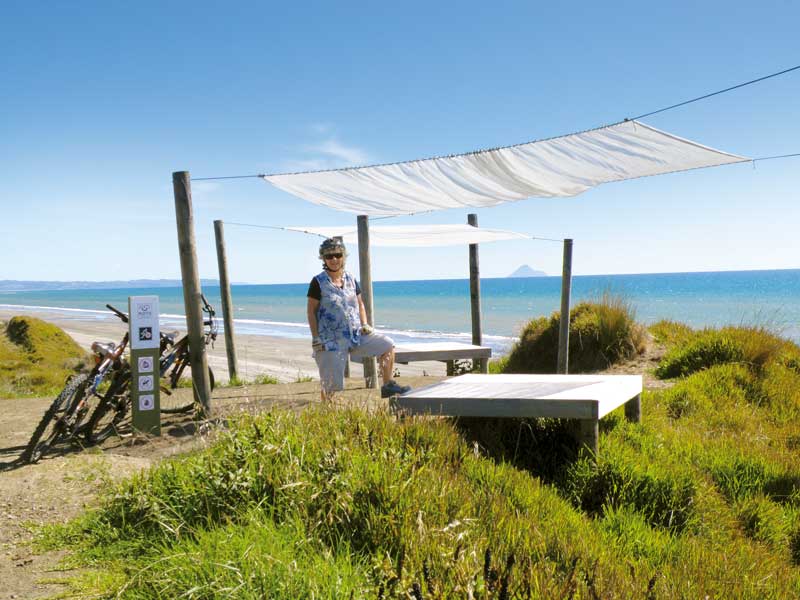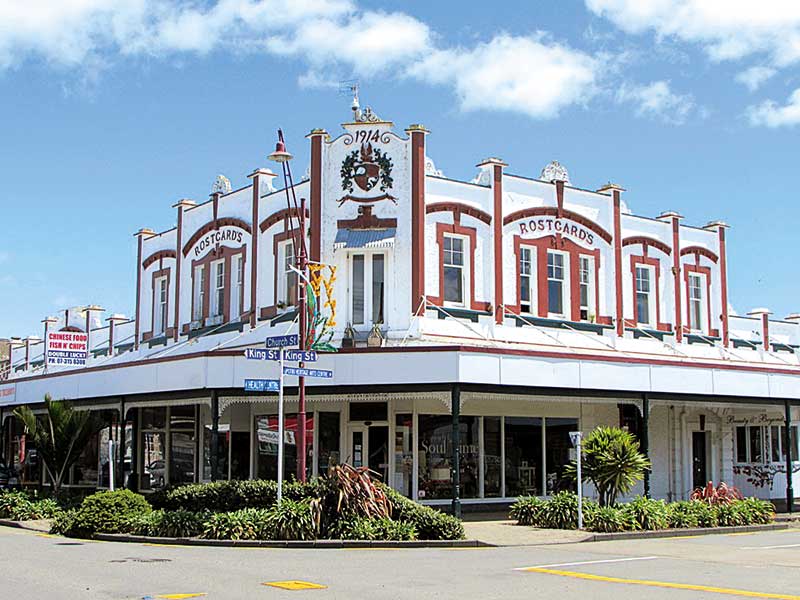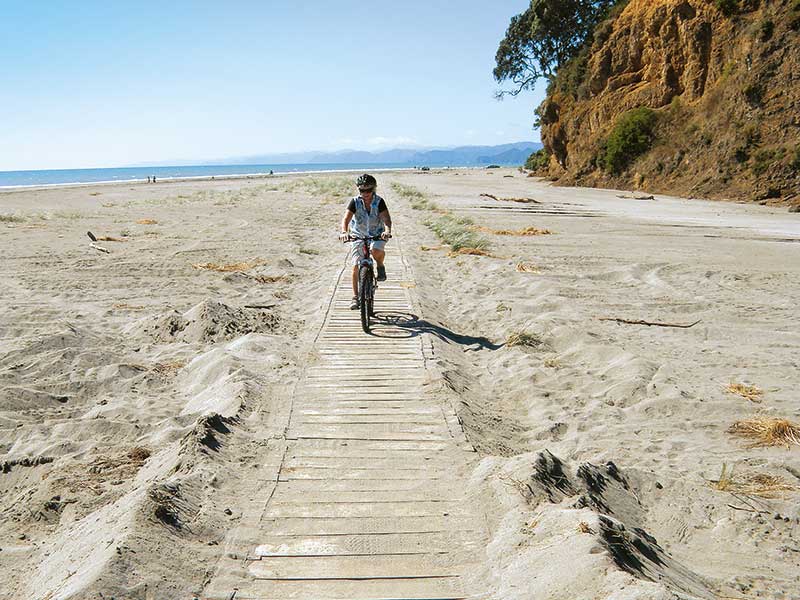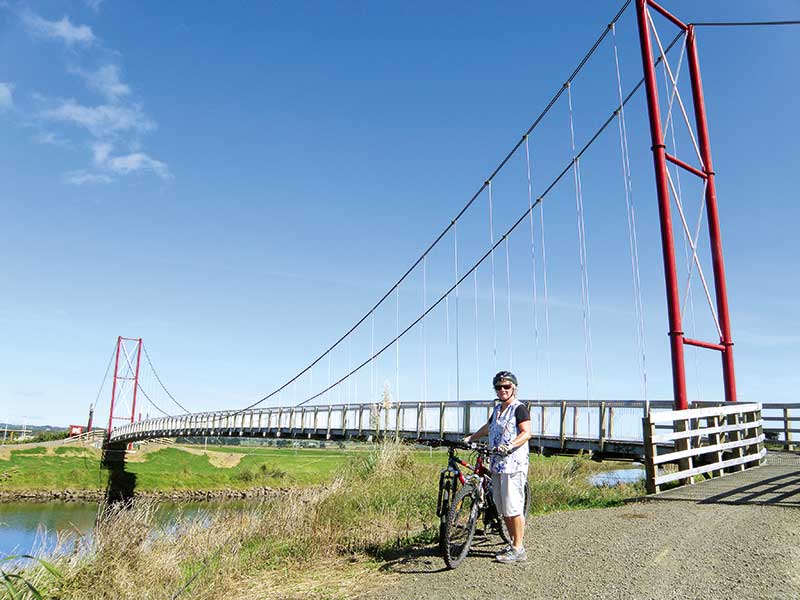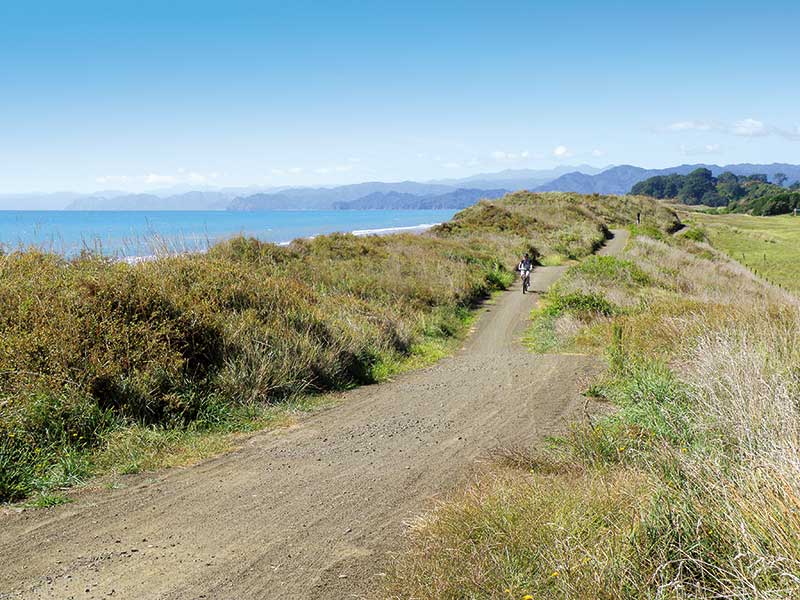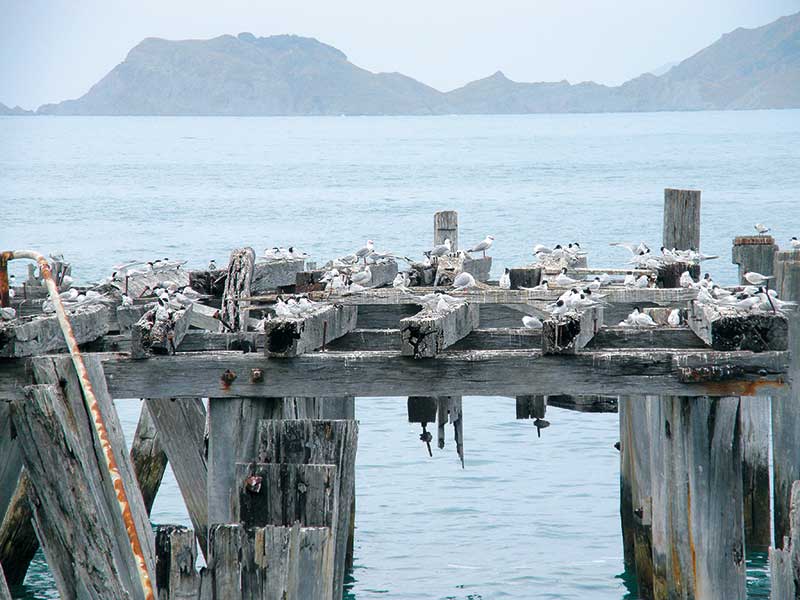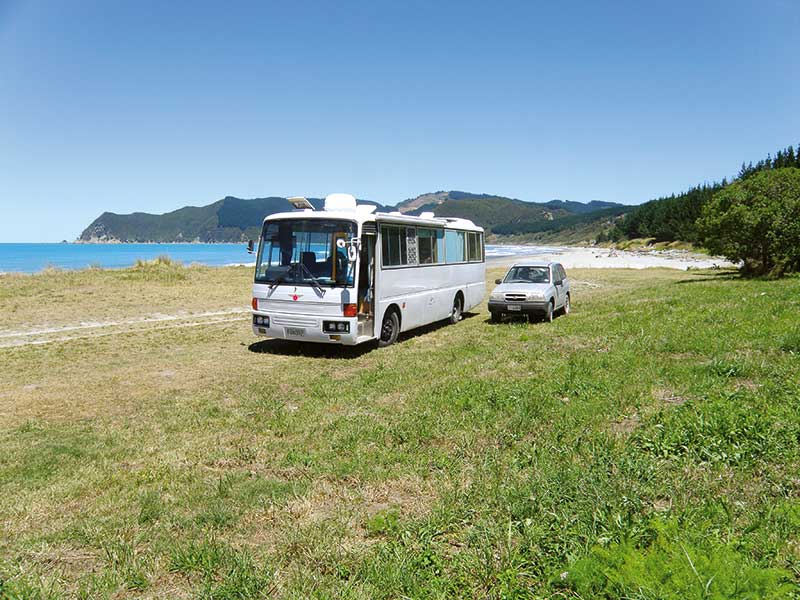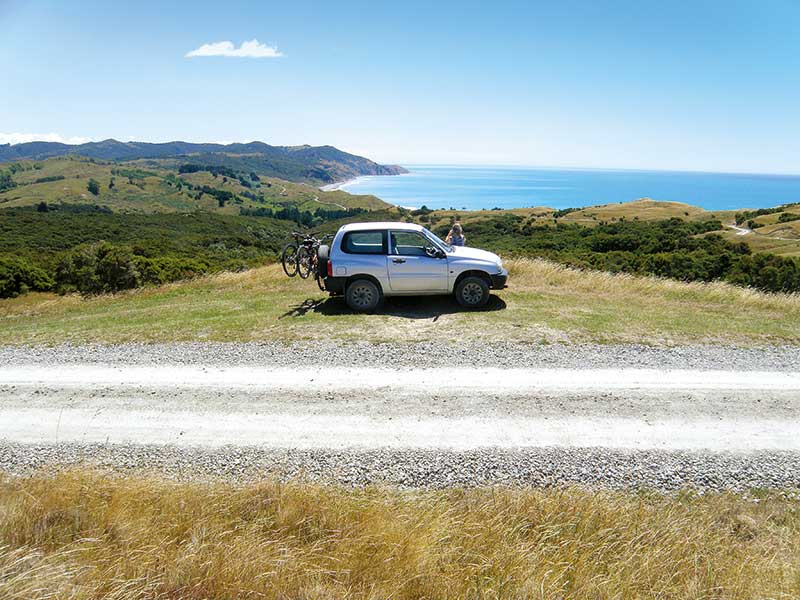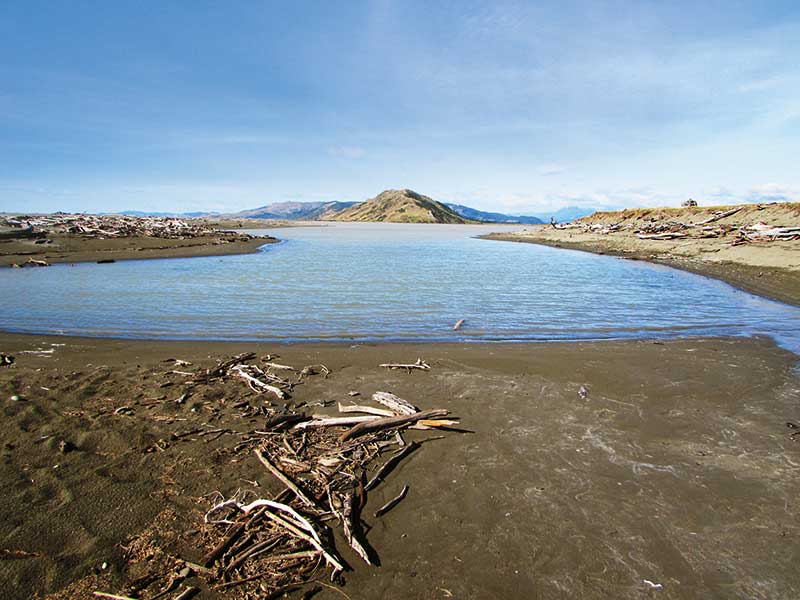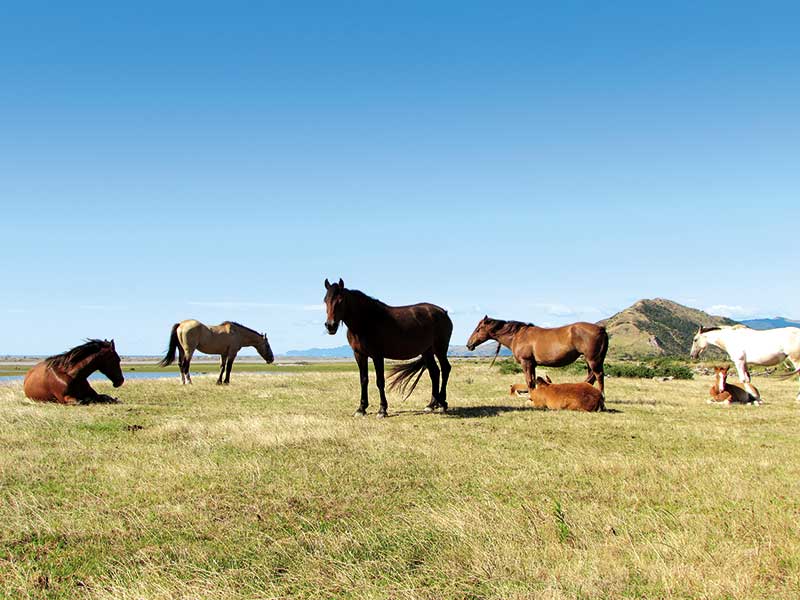Remote and rugged with bush-clad mountains and rocky beaches strewn with driftwood; sandy beaches backed by azure seas; beautifully carved and painted maraes in every settlement; horses on the beaches, on the roads, and in the paddocks; rickety wharves from another era, crumbling yet still defying the relentless waves.
The East Cape is unique territory and we loved it.
We started our East Cape exploration in Opotiki, a friendly little town with an interesting history. When Captain Cook sailed along the coast in 1769, he observed a dense population in the area. During the next 100 years, sealers, whalers and missionaries arrived and local Maori began to resist the influx of Pakeha, leading to the unfortunate killing of the missionary, Rev. Carl Volkner. This resulted in some years of warfare and a garrison was established, which in turn led to an increase in commerce. Opotiki flourished and in the early 1900s, its wide streets had many impressive buildings – hotels, banks and stores. Many of these historic buildings remain today.
Possibly the most important thing built in recent years is the Pakowhai ki Otutaopuku Bridge, opened in 2012. This impressive footbridge links the town with the beach and was constructed as part of the Motu Trails, one of the country’s Great Rides. The development of the Motu Trails has led to an influx of cyclists keen to experience the rides.
Between Opotiki and Te Kaha we passed bay after bay, each beach worth wandering along to examine the fine stands of the driftwood. On the horizon, White Island steamed, by the rivers children played while their fathers fished. At Te Kaha Point there is a freedom camping area, also a motor camp with washing machines and a dump station. It was a great spot to laze away the afternoon with a book and a drink, with the added bonus of a fellow camper who presented us with some freshly caught fish for tea. Summer living at its best!
Another day of tiki-touring followed as we continued south and east. The church at Raukokore sits on a headland where there are coastal views in both directions. Vehicles had thinned out here and as we made our way towards Whangaparoa and the turn inland we really began to feel the remoteness of the area. We saw more horses than people.
At Hicks Bay we came to the eastern coast of the East Cape peninsula. State Highway 35 loops from Opotiki to Gisborne but many unsealed roads lead from the main road to unfrequented beaches and river mouths and as we travelled south we explored many of these forgotten roads. We parked the bus near Hicks Bay and cycled along to the iconic wharf.
Ten kilometres south is Te Araroa, home of the largest and oldest pohutukawa tree in New Zealand. From here you can drive out to the East Cape lighthouse – the most easterly point in New Zealand and the first to see the sun each day.
Our next stop was tiny Tikitiki where the church is a must see. Built as a memorial to the locals who died in WWI, its interior is marae-like with carvings, tukutuku panels and painted rafters. The stained glass windows are all different, the one above the altar is especially stunning. It shows Christ and two servicemen surrounded by New Zealand flora.
Probably our favourite camping place on the East Cape was Waipiro Bay, where we found a freedom camping spot beside the beach. This is the most northerly beach that is part of Gisborne’s freedom or ‘summer camping’ scheme. Permits can be purchased at Opotiki, Gisborne and some stores along the way. Payment is possible online but we found phone coverage patchy around the coast.
As SH35 winds its way down to Gisborne, there are several other bays where ‘summer camping’ is allowed. These spots were relatively crowded with holiday makers who were set up for a summer at the beach, though we did find a place to park for a couple of nights at Pouawa, not far east of Gisborne.
Then it was on into the city and an end to our East Cape exploration. It certainly is a special part of the country.

Wairarapa – what a ripper
Elisabeth Easther signed up for a six-day 300km cycle journey with Green Jersey Tours to ride their Remutaka, Palliser, Tora Tour, and declared the experience gold class.

